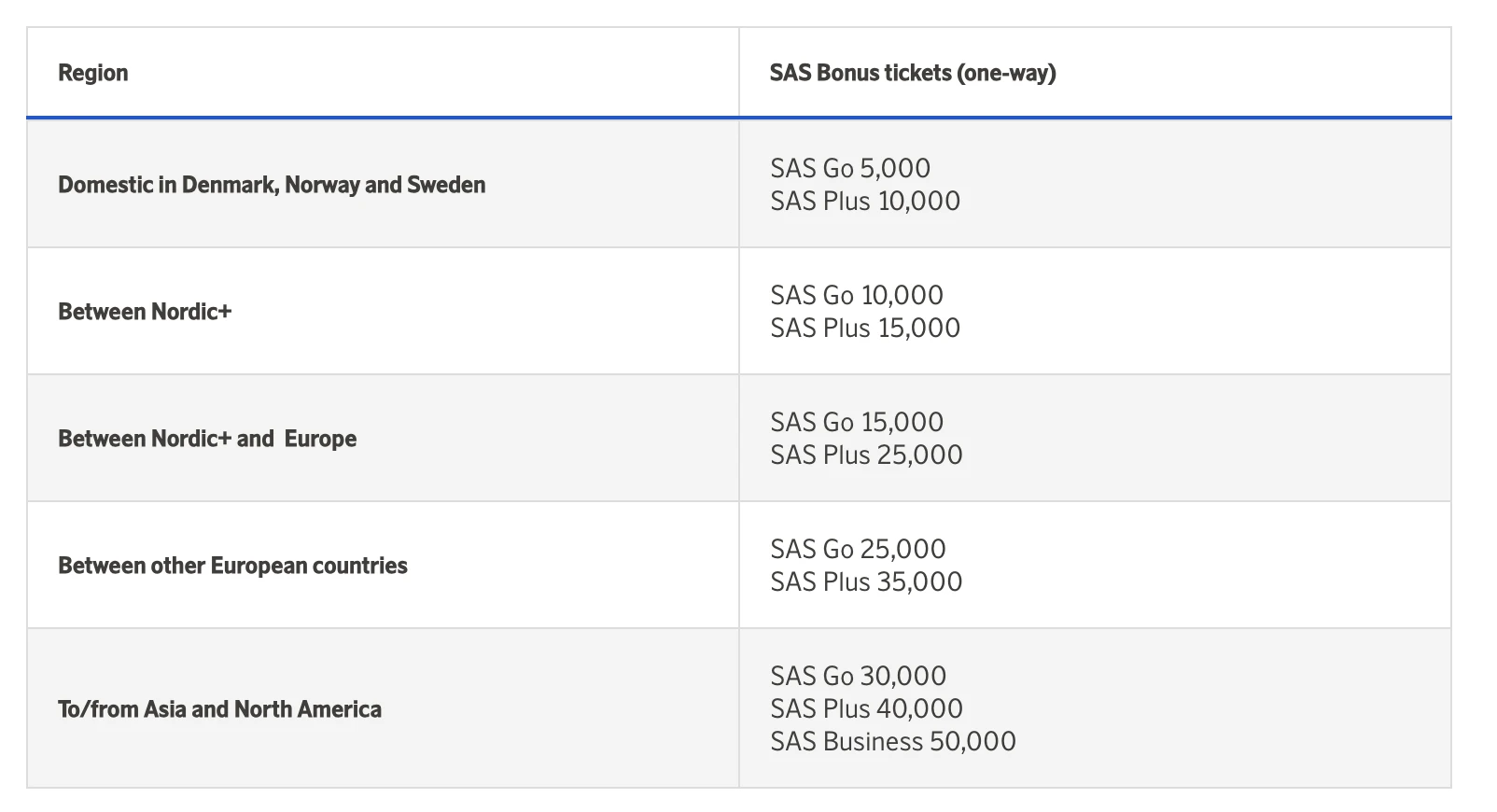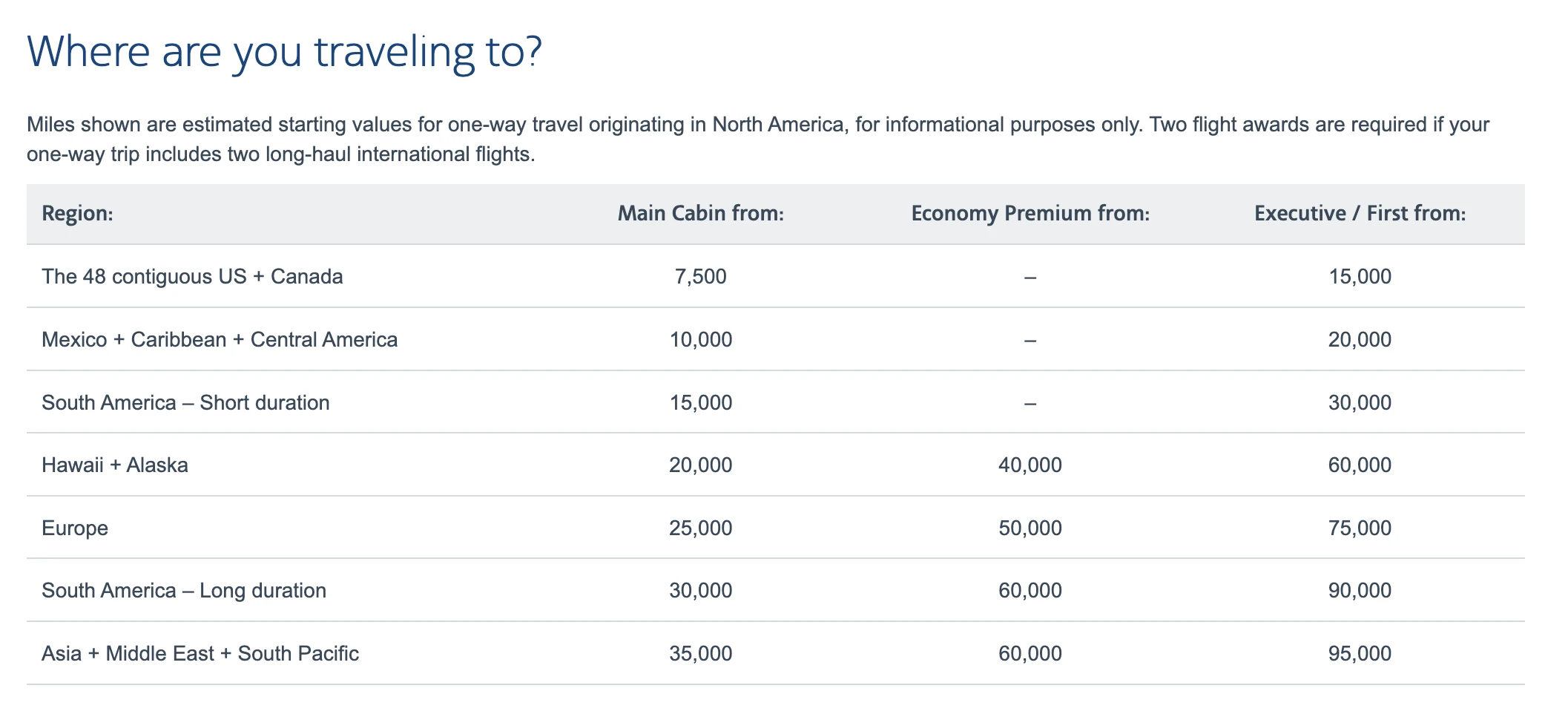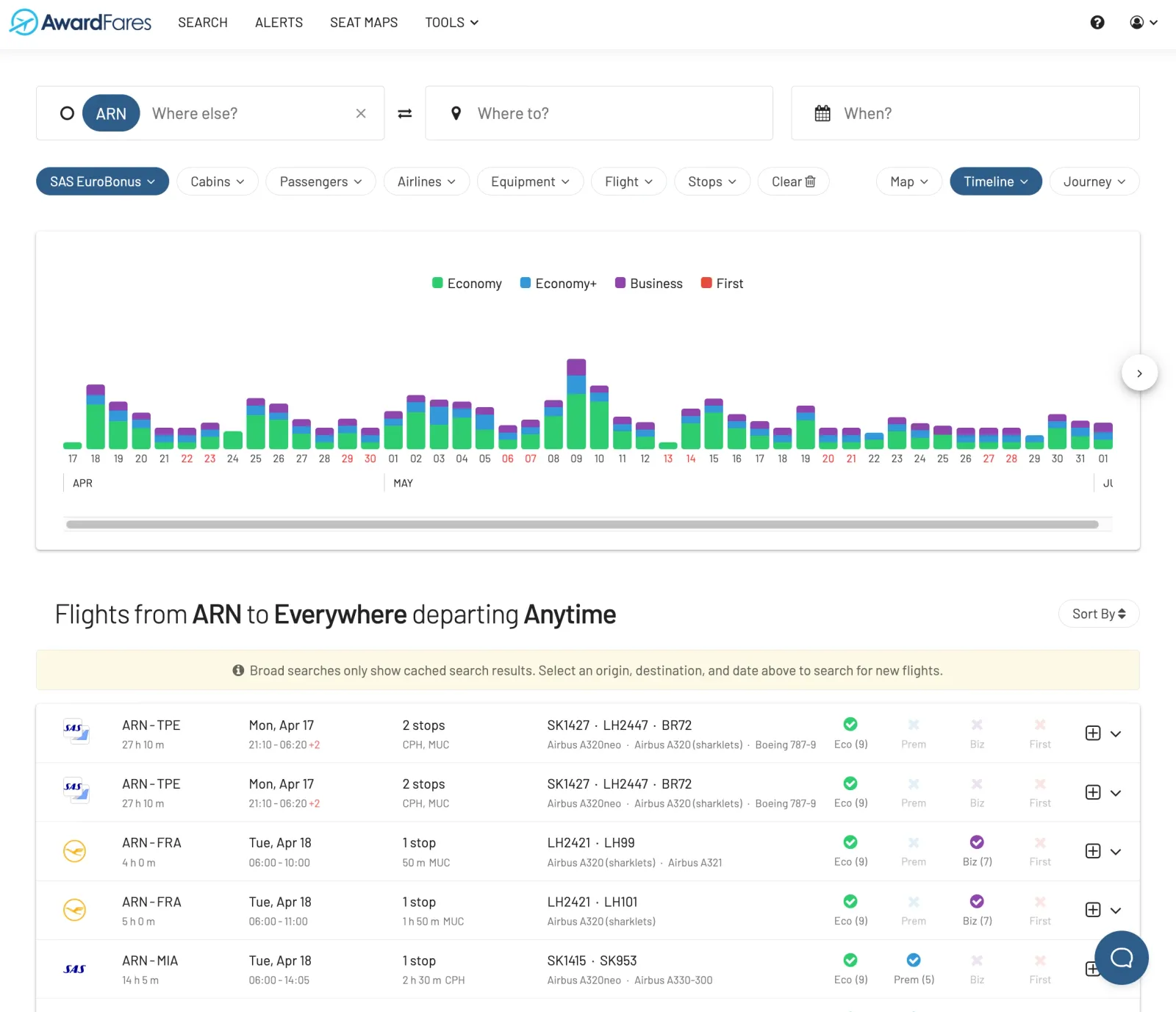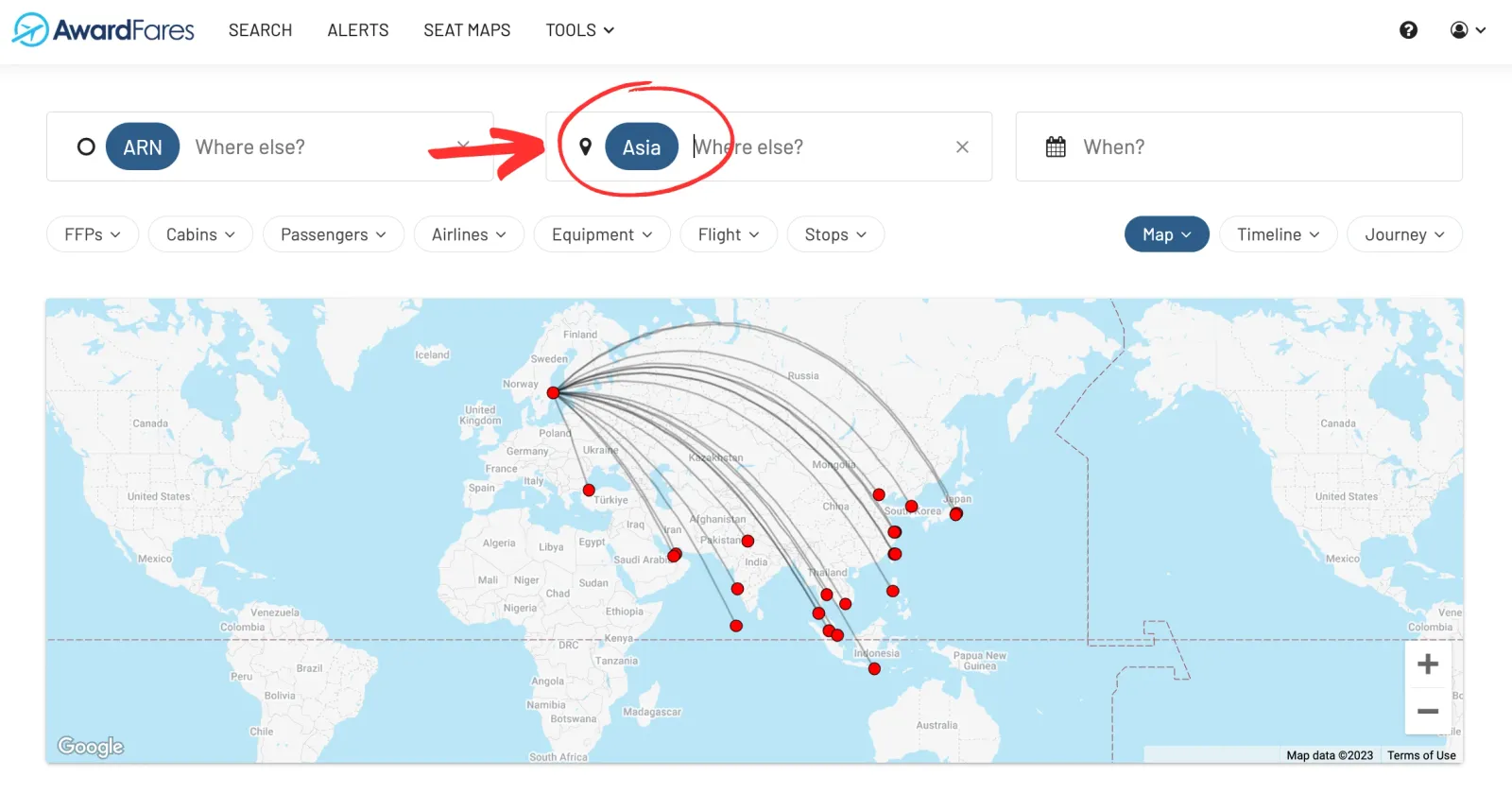For frequent travelers, airline loyalty programs offer a myriad of benefits that not only enhance the travel experience but make it more cost-effective. Since American Airlines introduced the very first frequent flyer program in the 80s, it became clear that staying loyal to one airline could reward customers a long way.
The core of these programs is the award charts, as it is how travelers can use their hard-earned miles for free travel, hotel nights, products, or experiences.
However, understanding these award charts took a lot of work due to their complexity and variation across different airlines, and it is becoming increasingly more difficult.
In this comprehensive guide, we aim to unravel the mysteries of the different types of award charts in frequent flyer programs and what you can do today to leverage your miles to the maximum.
In this post
- What are Award Charts?
- Different Types of Award Charts
- Understanding Your Program’s Award Chart
- Why are Airlines Shifting to Dynamic Pricing Award Charts?
- AwardFares: The Secret Tool To Beat Any Award Chart
- Want more award travel intel?
- Read more
What are Award Charts?
Award charts are basically tables that outline how many miles or points you’ll need to redeem for a free flight (an award flight) in a frequent flyer program. They form the basis of any airline loyalty program, detailing the cost in miles from one region to another, often further divided by cabin class (economy, business, or first).
Different Types of Award Charts
Award charts can be of different types, depending on what criteria they use to determine the price (in miles or points) of the award tickets. Here are the most common ones.
Zone-Based Award Charts
Zone-based award charts are The most common type you’ll encounter. These charts categorize countries into different zones or regions, with a fixed amount of miles needed to travel from one zone to another. For instance, before 2022, American Airlines AAdvantage used a zone-based award chart where North America to Europe in business class is a fixed 57,500 miles one-way, regardless of whether you’re flying from New York to London or Los Angeles to Istanbul.
The key advantage of zone-based charts is maximizing value by traveling as far as possible within a single zone for a set number of miles. However, the downside is that shorter flights can often be poor value due to the broad zoning.
Distance-Based Award Charts
As the name suggests, distance-based award charts calculate the miles needed based on the actual flight distance. Airlines such as British Airways and Cathay Pacific use distance-based charts. Short-haul flights can offer exceptional value, as the miles required can be significantly less than in zone-based systems.
The flip side is that for long-haul flights, especially ones involving multiple segments, the mileage cost can quickly exceed those of zone-based awards. The trick in these scenarios is to understand the distance between different destinations, which is crucial to harnessing the potential of distance-based award charts effectively.
Revenue-Based Award Charts
In revenue-based award charts, the miles needed for an award flight are directly tied to the ticket cost. Airlines such as Southwest Airlines and JetBlue follow this model. The higher the ticket price, the more miles you’ll need to redeem an award flight.
This type of award chart offers simplicity and transparency since you know precisely how your miles equate to dollar value. However, they generally provide less opportunity for “sweet spots” or outsized value than zone- and distance-based charts.
Region-Based Award Charts
Similar to zone-based charts, region-based award charts group countries into regions but with one significant difference — they also take into account the region you’re flying from. This means the mileage cost varies not just based on your destination but also your departure point.
For instance, Lufthansa’s Miles & More and SAS EuroBonus programs use this kind of award chart. The benefit of region-based charts is that they can offer more accurate pricing reflective of the flight’s length. However, they can be more complex due to the many variables involved.

Hybrid Award Charts
Hybrid award charts combine elements from multiple types of award charts. For instance, Delta Air Lines has an undisclosed award chart that appears to mix zone, distance, and revenue elements. Although this lack of transparency can be frustrating, savvy travelers who spend time understanding the program’s nuances can still find good redemption opportunities.
Dynamic Pricing
Dynamic pricing strays away from the concept of a fixed chart, instead adjusting the mileage cost based on demand and other factors. It’s a model that more airlines are moving towards, such as American Airlines AAdvantage and United MileagePlus. The main advantage is the greater availability of award seats since no fixed award inventory limits exist. However, the unpredictability of costs and the potential for very high mileage prices, especially during peak periods, is a significant drawback.

Summary of Award Chart Types
| Type of Award Chart | Description | Pros | Cons |
|---|---|---|---|
| Distance-based | The number of miles required to redeem an award is based on the distance flown. | Simple to understand | Can be inflexible, as the same number of miles may not always be required for the same flight |
| Region-based | The number of miles required to redeem an award is based on the region you are flying to. | More flexible than distance-based charts | Can be difficult to compare different regions |
| Revenue-based | The number of miles required to redeem an award is based on the cash price of the flight. | Simplicity and transparency. | Can be difficult to find award availability, as airlines may not release all of their award seats at the same time |
| Hybrid | Combines multiple types of award charts (e.g. region and distance) | Can offer diverse redemption opportunities | Lack of transparency and potential for complexity |
| Dynamic pricing | The number of miles required to redeem an award varies depending on the demand for the flight. | Greater availability of award seats | Unpredictability of costs, especially during peak periods |
Understanding Your Program’s Award Chart
Regardless of the type of award chart your frequent flyer program uses, understanding it is crucial to maximize your miles’ value. Research the sweet spots, keep up to date with changes (airlines often devalue their charts), and use tools like AwardFares to help plan redemptions.
What is a good redemption?
How do you know if a redemption of an award flight is good? Ultimately, this is very subjective, as the benchmark is relative. But there are a few ways to be objective and concrete when determining if redemptions are good, or you are getting poor value from your miles.
A good redemption in a frequent flyer program is one that gives you the most value for your miles. This means finding a flight that you would have paid a lot of money for in cash, but can instead redeem for a relatively low number of miles.
Here are a few things to keep in mind when looking for a good redemption:
- The cost of the flight in cash. The lower the cash price of the flight, the better the redemption value.
- The number of miles required to redeem the flight. The fewer miles required, the better the redemption value.
- The availability of award seats. Some flights are more difficult to find award seats for than others.
- Your loyalty status. If you have status with a frequent flyer program, you may be able to get access to award seats that are not available to the general public.
Some examples of classic good redemptions are :
- Redeeming miles for a business class flight on a long-haul route. Business class flights can be costly in cash, so redeeming miles for them can save you a lot of money.
- Redeeming miles for a flight during the peak season. Flights during the peak season are often very expensive, so redeeming miles for them can save you a lot of money.
- Redeeming miles for a flight to a popular destination. Popular destinations tend to be the most expensive, so redeeming miles for them can save you a lot of money.
Stay tuned to our posts, we regularly publish guides and articles on how to find and book the best sweet spots on each program.
Why are Airlines Shifting to Dynamic Pricing Award Charts?
Initially, frequent flyer programs started as a way for airlines to give away empty seats while encouraging customers to stay loyal. With time, and as award charts evolved, many travelers managed to exploit loopholes to get very expensive seats for a few miles. Particularly when you consider high sign-up bonuses from credit cards and multipliers of revenue-based programs.
Now, as the industry changes, airlines also have more resources to detect sweet spots and maximize their yield, and that’s why most of them are changing the rules in their award charts. While traditional award charts offered a fixed, predictable structure for redeeming miles, more and more airlines are moving towards dynamic pricing models.
Here are some of the factors that explain why airlines are doing this.
1. Technology and Data Analysis
The development and availability of advanced technology and data analysis tools have enabled airlines to implement more sophisticated pricing models. With dynamic pricing, airlines can vary award prices based on numerous factors, including flight demand, seasonality, route popularity, and competitive pressures.
These systems can analyze a vast amount of data in real-time, allowing airlines to adjust award pricing on the fly to maximize their yield.
2. Revenue Management
Dynamic pricing ties in more closely with airlines’ revenue management strategies. Traditional fixed award charts don’t consider the monetary value of a seat. As a result, a business class seat on a peak flight could theoretically be redeemed for the same number of miles as on an off-peak flight, even though the former is far more valuable to the airline.
Dynamic pricing allows airlines to align award costs more closely with the seat’s actual value, ensuring they aren’t ‘losing’ potential revenue by offering high-value seats for a relatively low number of miles.
3. Customer Behavior
Dynamic pricing also gives airlines more flexibility in managing customer behavior. By lowering award costs during off-peak periods or on less popular routes, they can stimulate demand, leading to better capacity utilization. By raising costs on popular flights, they can preserve revenue seats for paying customers while still offering award seats to those willing to spend more miles.
4. Eliminating Sweet Spots
Traditional award charts often have ‘sweet spots’ where savvy customers can get outsized value for their miles. For example, using a fixed number of miles to fly in first class to a distant destination within the same award zone.
Dynamic pricing, especially when combined with the elimination of award charts, makes it much harder for customers to find such sweet spots, thereby reducing the potential for ‘losses’ from the airline’s perspective.
5. Increasing Transparency and Simplicity
On the surface, dynamic pricing appears simpler and more intuitive to customers. The cost of an award flight directly correlates with the ticket price, mirroring the purchase experience with cash. In reality, however, the lack of a fixed award chart can make it harder for customers to predict how many miles they’ll need for a given flight.
While the shift towards dynamic pricing may have benefits from an airline’s perspective, it’s often met with frustration from frequent flyers like us, especially those who have learned to maximize their miles’ value under the old systems.
It is a trend that’s likely to continue as airlines seek to maximize revenue, manage demand, and leverage advances in technology and data analysis. Therefore, it’s more important than ever for frequent flyers to understand these changes and adapt their mile-earning and redemption strategies accordingly.
But don’t worry, we are here to help :)
AwardFares: The Secret Tool To Beat Any Award Chart
AwardFares offers a variety of features that enable users to uncover sweet spots across different types of award charts.
First, its ultra-fast search capability allows users to explore availability across different frequent flyer programs, airlines and alliances. It enables a broad view of potential routes and redemption options.
Its real-time tracking system notifies users of award space the moment it becomes available, providing opportunities to snag high-value redemptions.
AwardFares also provides detailed information of each flight, including cabin classes and seat availability (with seatmaps!). This can really help identify high-value redemptions.
AwardFares’ interface is modern, user-friendly and meant for mobile, which allows easy comparison between different flights and airlines.
Lastly, by keeping track of historical data, AwardFares can give users insights into trends and patterns, further aiding in the identification of award chart sweet spots.

How to beat your award chart with AwardFares
- Use the filters to narrow down your search. AwardFares allows you to filter your search by airline, destination, travel class, and other factors. This can help you quickly find flights that meet your criteria.
- Use the award chart comparison tool. AwardFares allows you to compare different award charts side-by-side. This can help you find the best possible redemption rate for your miles.
- Set up alerts. AwardFares allows you to set up alerts for specific flights or routes. This way, you will be notified if the price of a flight changes, so you can book it at the best possible time.
- Use the award search tool. AwardFares’ award search tool allows you to search for flights using miles from different frequent flyer programs. This can help you find the best possible deal on your next trip.
Here are some additional tips for finding sweet spots in award charts using AwardFares.
- Be flexible with your travel dates. Oftentimes, you can find better redemption rates if you are willing to travel during the off-season or on weekdays.
- Consider flying economy class. In some cases, you can find better redemption rates for economy class flights than for business or first class flights.
- Use your loyalty status. If you have status with a frequent flyer program, you may be able to get access to award seats that are not available to the general public.

Want more award travel intel?
You can try AwardFares for free. We are rolling out new features and improvements regularly, so sign up for our monthly newsletter to stay on top of the latest news, announcements, and pro tips.
With our Gold and Diamond tiers, you can access premium features such as unlimited daily searches, alerts, seat maps, flight schedules, and more!
Read more
Our guides have all the information you need to be a pro travel hacker and explore the world on points. Here are some related posts you might enjoy:
